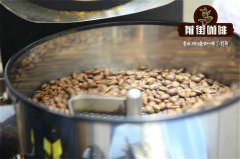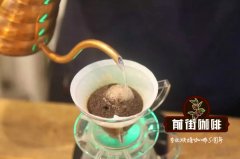Sidamo Coffee Bean Guji producing area Corxia Village (Kercha) Yisuobi original species

Professional coffee knowledge exchange more coffee bean information please follow the coffee workshop (Wechat official account cafe_style)
Sun West Dharma
National Yisuobi (Ethiopia)
Producing area Oromia Region
Guji (Guji Zone)
Producer: local coffee farmers in Kercha, Guji producing area
1900 to 2000m above sea level
The Variety Yisuobi Gu excellent original species (Heirloom)
Annual rainfall is about 1500 to 2000 (mm)
Soil: reddish brown
Treatment method African scaffolding sun drying treatment
Introduction:
The district of Ethiopia is divided into four levels, the order from large to small is Region, Zone, woreda, kebele.
Most of the place names of raw coffee beans are named in accordance with this rule. The Guji producing area launched in this batch is located in the southeast of the well-known producing area of Yejia Sheffield, which belongs to the Oromia Region → Guji Zone regional coffee beans in the division of administrative regions. Just as Yejia Xuefei became well-known after its fame, it became an independent secondary production area of Sidamo (Guji Zone). Guji production area is more favored by buyers in Sidamo province in recent years. The production area of Guji Zone has always been a production area worthy of considerable attention, and the development in recent years has also confirmed that the rise of Guji production area is indeed one of the important trends in the development of Ethiopia in recent years. In addition to the beans from the larger producing areas, such as Humbera and Shakespeare, there are also excellent beans from processing plants or even single estates, which are unmatched by the traditional Yega Sheffield producing areas. What's more, in terms of innovative treatment methods, there will also be honey treatment batches. In addition to the recent focus in Gesha Village, the Guji producing area has also become an important hot spot. To understand the trends in Ethiopia, Guji can be said to be a key point that can not be ignored.
Kercha is located in a tribal village in the Guji Zone producing area. The farmers in the natural village mainly grow coffee and other small crops to earn a living. In order to make a living, the Kercha cooperative, which combines the families of small coffee farmers, will have a processing farm, and the opposite service will naturally be dominated by local coffee farmers.
Guji Zone has always been one of the most popular sponsors of the Dutch Red Cherry Project. As a result of the exchange of information, the production technology of this area has naturally benefited and improved.
It's kind of like a contract. The Red Cherry Project (Operation Cherry Red) is led by the Dutch company Trabocca, and half of the funding is funded by the Dutch government.
Since 2005, the Dutch company Trabocca has partnered with many small coffee cooperatives in Ethiopia to teach and help encourage small coffee farmers to improve post-processing techniques starting with red fruit harvest.
Such as washing, sun or fermentation treatment to improve the quality management of coffee. Whenever in the harvest season
Trabocca will invite selected coffee farmers' organizations and producers to participate in the project.
Collect micro-batches of coffee (about 1500 to 3, 000 kilograms) and select them by hand in batches
100% ripe red coffee cherries (so called the Red Cherry Project). Finance provided by Trabocca,
Resources such as equipment and technology assist farmers and promise to actually follow the standard process (SOP) output.
The quality of the specifications up to the required standards will be purchased at an excellent price. The spirit of the plan
.
Important Notice :
前街咖啡 FrontStreet Coffee has moved to new addredd:
FrontStreet Coffee Address: 315,Donghua East Road,GuangZhou
Tel:020 38364473
- Prev

How to make Coffee with Honey in Yunwu Manor in Costa Rica
Professional coffee knowledge exchange more coffee bean information please follow the coffee workshop (Wechat official account cafe_style) Costa Rica Tarrazu Dota Las Nubes (H) Costa Rica Tara multi-tower cloud manor honey treatment shallow X production resume: country: Costa Rica (Costa Rica) Origin: Tarazu (Tarrazu) multi-tower (Dota)
- Next

Puerto Rico Yaoke coffee Puerto Rico San Pedro Manor AA coffee how to drink?
Professional coffee knowledge exchange more coffee bean information please follow the coffee workshop (Wechat official account cafe_style) the whole history of coffee in the Caribbean has a lot to do with the Spanish reclamation, coffee was not so important in the 18th century, the main task was to grow sugar-producing crops in the fertile valleys, the French territories were in turmoil in Europe in the early 19th century (1800).
Related
- Detailed explanation of Jadeite planting Land in Panamanian Jadeite Manor introduction to the grading system of Jadeite competitive bidding, Red bid, Green bid and Rose Summer
- Story of Coffee planting in Brenka region of Costa Rica Stonehenge Manor anaerobic heavy honey treatment of flavor mouth
- What's on the barrel of Blue Mountain Coffee beans?
- Can American coffee also pull flowers? How to use hot American style to pull out a good-looking pattern?
- Can you make a cold extract with coffee beans? What is the right proportion for cold-extracted coffee formula?
- Indonesian PWN Gold Mandrine Coffee Origin Features Flavor How to Chong? Mandolin coffee is American.
- A brief introduction to the flavor characteristics of Brazilian yellow bourbon coffee beans
- What is the effect of different water quality on the flavor of cold-extracted coffee? What kind of water is best for brewing coffee?
- Why do you think of Rose Summer whenever you mention Panamanian coffee?
- Introduction to the characteristics of authentic blue mountain coffee bean producing areas? What is the CIB Coffee Authority in Jamaica?

